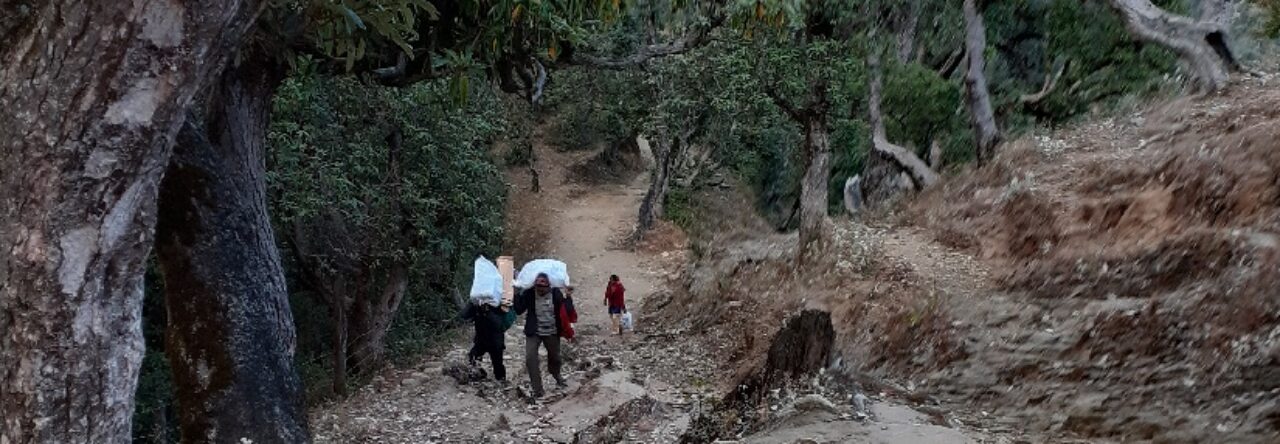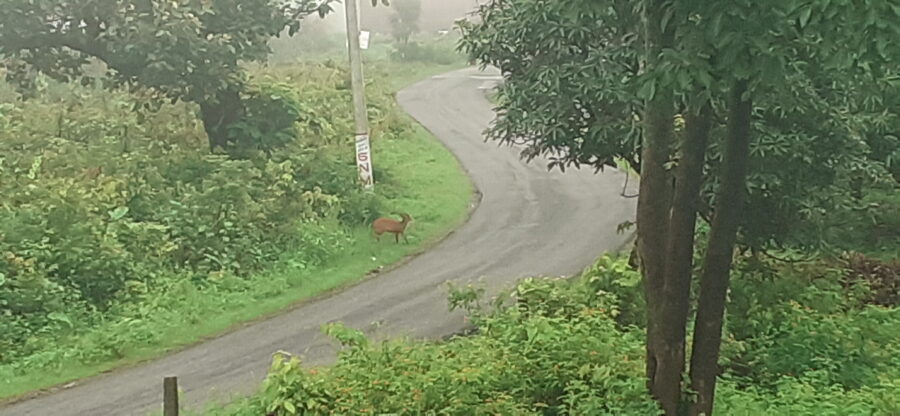Trip to Paithani Rahu Temple : A Journey Through the Himalayas
Trip to Paithani (Garhwal)
Last week, my mother, brother, Yolo (our Labrador), and I embarked on a trip to Paithani in our car. Paithani is famous for its ancient ‘Rahu’ temple, nestled in the midst of the majestic Himalayan mountains. The journey was exhilarating, as we passed through ancient towns and villages, soaking in the serene beauty of the region.
Start
We started our journey just before 10:00 AM from our home on the outskirts of Dehradun, carrying a packed lunch for all of us. By around 1:00 PM, we reached Rishikesh, the ancient city and yoga capital of the world. From here, the road ascends into the higher Himalayas. The picturesque journey was breathtaking, with the mighty Ganga River flowing alongside the highway. Our journey followed the river upstream.
Before reaching Byasi, my mother and I treated ourselves to kulfi. Yolo, our adorable Labrador, always gazes at me longingly whenever I eat something, as if he’s missing out on a tasty treat—so, of course, I shared a bit of my kulfi with him.
Trip to Paithani Rahu Temple : Midway
As we captured the beauty of the Himalayan roads on my iPhone, we decided to stop near Shivpuri, a village famous for its world-renowned white-water rafting. We unpacked our lunch and enjoyed the scenic surroundings. Before resuming our journey, we took Yolo for a short walk, as he tends to feel uncomfortable after sitting for long hours in the car.
Our route took us through Devprayag, the lowest of the five ‘Prayags’ (sacred river confluences), where the Bhagirathi and Alaknanda Rivers merge to form the Ganga. Upstream, the river is called ‘Bhagirathi’ when flowing from Gaumukh and Gangotri until Devprayag, while the river flowing down from Badrinath is known as ‘Alaknanda.’
From Devprayag, we took a right turn from the Badrinath Highway to head toward Pauri (5,951 ft). The road to Pauri winds through pine-covered forests, offering mesmerizing views of the snow-capped Himalayan peaks. The region is sparsely populated, and the well-maintained roads make for a pleasant drive.
Trip to Paithani Rahu Temple
Paithani
Located at an altitude of 1,503 ft, Paithani lies in a valley. After passing through Pauri and Paubo, we reached Paithani around 7:45 PM. By then, most of the market had closed, and villagers were retiring for the night. Finding a suitable hotel was challenging, as two out of the three available hotels refused to accommodate Yolo. Left with no choice, we settled for the third option, which, like the others, was quite basic.
Paithani is known for frequent leopard sightings at night. Villagers go to bed early due to the fear of these predators, which often come near the village in search of small animals and calves. Occasionally, even Himalayan black bears descend from the higher mountains. Given the lack of good accommodations in Paithani, it is advisable to stay 4 km before the village, where a better hotel is available near a petrol pump.
Unfortunately, Paithani village itself is quite unclean, with garbage strewn across its streets. The village head should take urgent action to maintain cleanliness, especially since Paithani also serves as a market hub for smaller surrounding villages. However, the temple area was relatively clean.
The Rahu Temple is located across a bridge. According to legend, Adi Shankaracharya, the great spiritual guru of the 8th century, sensed strong Rahu vibrations while passing through Paithani on his way to Badrinath. He discovered a sacred rock in the river beside the Lord Shiva temple, which is now revered as the Rahu temple. The Rahu rock is massive, and devotees light 18 earthen oil lamps here to seek relief from Rahu’s influence. This tradition has been followed for over 1,200 years. Ideal place for Rahu Shanti.
After offering our prayers, we returned to our car for the journey back.
One of the most disturbing things we learned from the villagers was that there were no dogs left in Paithani. Every single dog in the village had been killed and eaten by leopards. The villagers spoke about it with an almost casual acceptance, even saying that it was good because the barking of dogs at night was irritating. I was completely taken aback by this attitude. Dogs are our most faithful companions, always standing by humans with unconditional love. Yet here, these people seemed to favor the predators over their own loyal protectors.
It was disheartening to hear them justify this, as if the presence of leopards was more natural and acceptable than having dogs in their village. I couldn’t help but think—if it were their human loved ones being hunted, would they still speak this way? Would they still dismiss the loss so casually? It felt cold-hearted and deeply unsettling. Looking at Yolo, I felt even more grateful for his presence, knowing how much love and loyalty he brings into our lives.
Pauri
On our way back, we took a brief stop at the Pauri Cantonment bypass to take in the stunning views and click a few pictures near the ancient Kandoliya Temple. The town of Pauri, from the outside, appears well-maintained and clean. Along the way, I collected some pine cones as souvenirs.
Devprayag
We were well past lunchtime by the time we found a place to eat. Surprisingly, despite Garhwal Himalayas being known as Devbhoomi (God’s Land), most of the eateries along the route served non-vegetarian food. Only along the Chardham Highway—which connects Rishikesh to the sacred shrines of Badrinath and Kedarnath—did we find an abundance of vegetarian restaurants.
At the Dhaba (Restaurant) where we stopped, the owner was so impressed by Yolo’s gentle behavior that he asked if Yolo had fathered any puppies, as he wished to adopt one. This made us feel even prouder of our adorable companion!
Return
Driving in the hills requires caution, so I maintained a steady speed. We reached home around 11:00 PM, ending our short yet fulfilling pilgrimage. After a light meal, we finally rested.
Despite the challenging terrain, our Skoda performed remarkably well, delivering an impressive fuel average of 18.9 kmpl—even after multiple uphill and downhill stretches.
Above all, my mother was delighted to have had the Rahu darshan, which was the primary reason for our trip. Seeing her happy made the journey all the more meaningful.
———————————————————————————————–
Would I visit Paithani again? Probably not. The temple was interesting, but the village itself needs serious improvement. The lack of cleanliness, limited accommodation options, and eerie silence at night weren’t exactly inviting.
But would I go on another Himalayan road trip? Absolutely!
The drive through Devprayag, the quiet roads near Pauri, and even the little moments—like sharing kulfi with Yolo—made this trip truly special.


